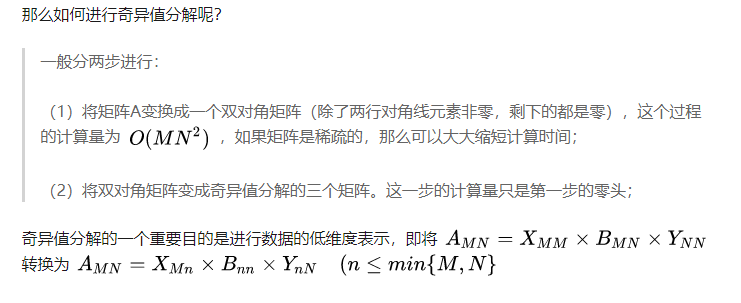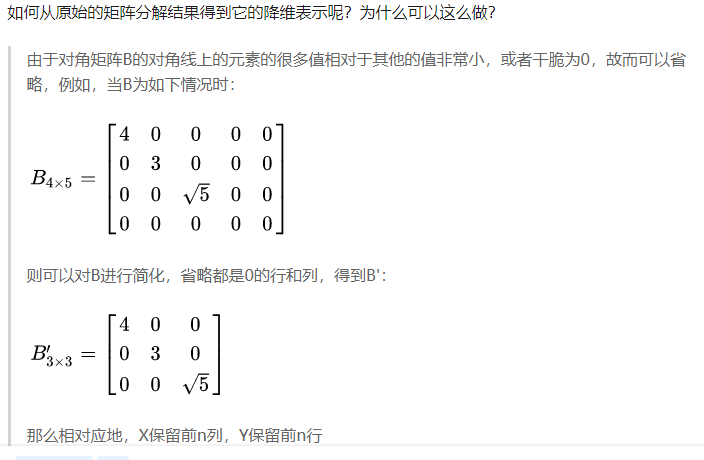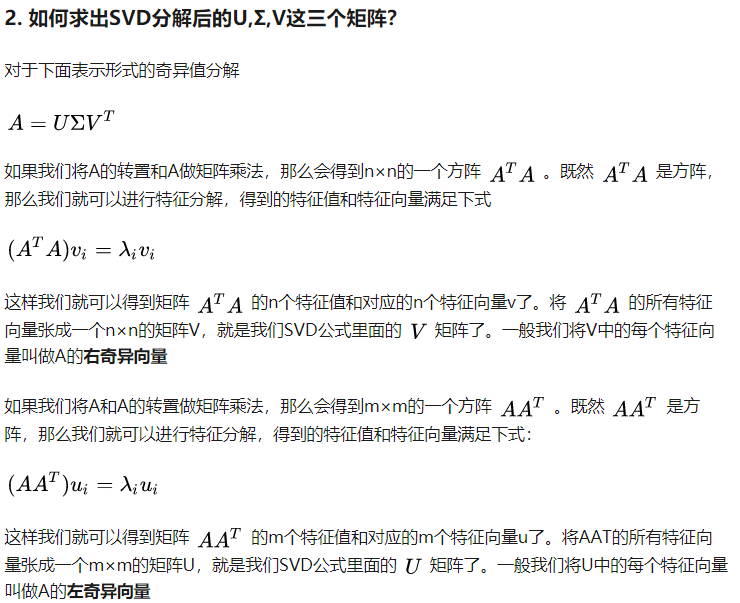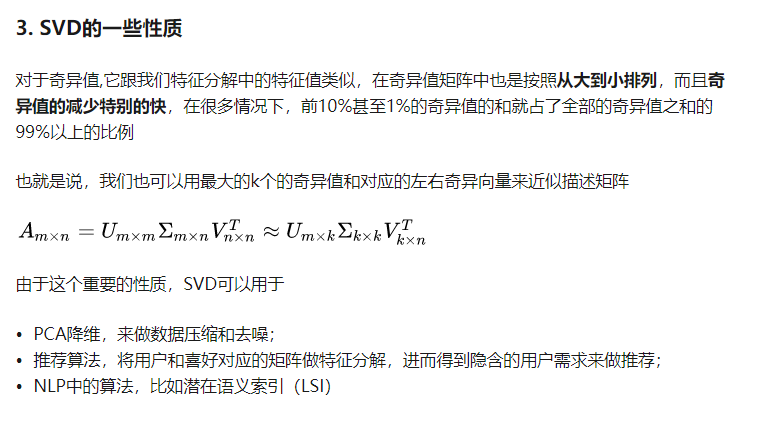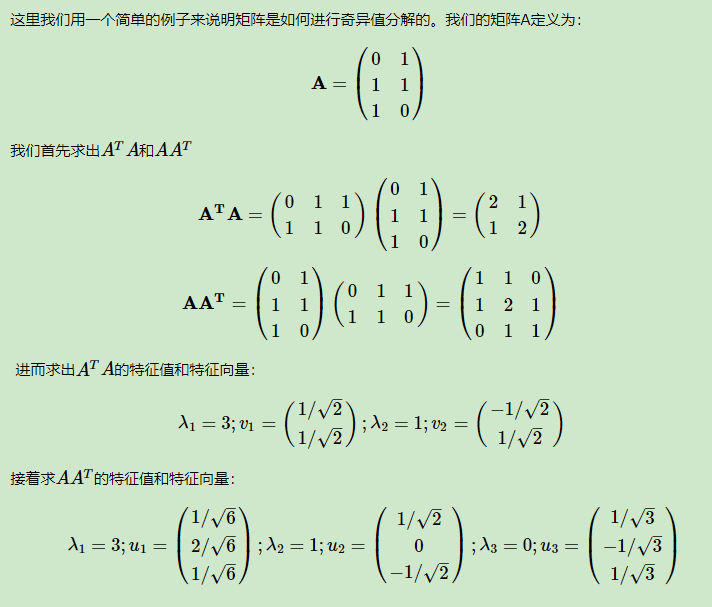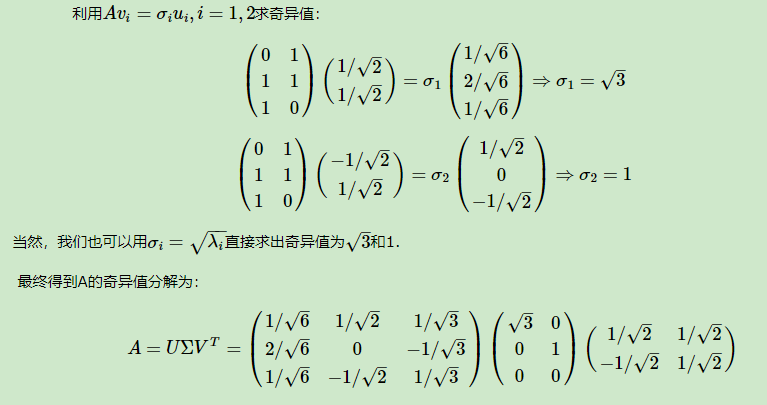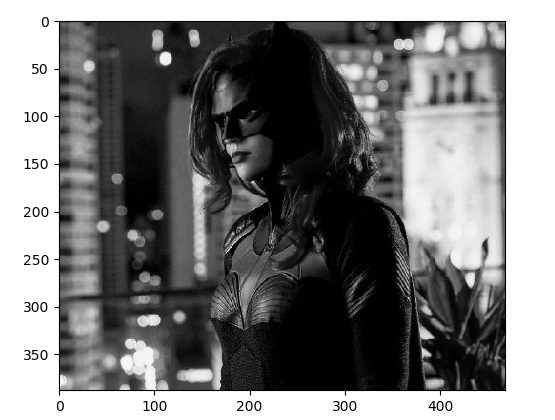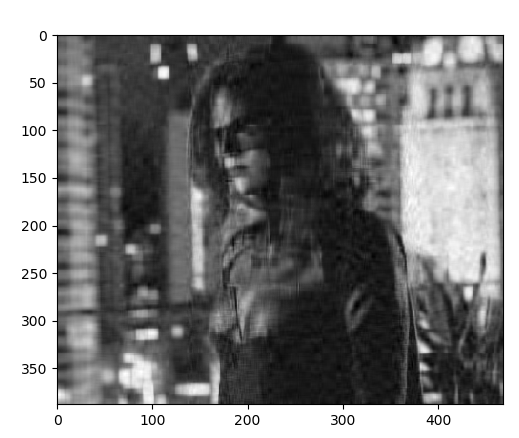CH1.奇异值分解原理
CH2.SVD计算举例:
示例一:SVD算法的实现
class SVDReduce(object):
def __init__(self, data, dimension=500):
"""
Initialize the class with the parameters.
:param data: pd.DataFrame, the output data from the class DataPreprocess.
:param dimension: int, default 500. To specify the output dimension.
"""
self.data = data
self.target_dim = dimension
self.format_data_path = '../../data/format_2/'
self.field = ['user', 'product', 'context', 'shop']
# self.field = ['product']
def judge(self, data):
"""
Abandon
方法:判读大领域的维度
标准维度,判断:不足补零,大于转为svd()
:return:
"""
logger.info("judge the dimension...")
field_matrix_shape = data.shape
dimension = field_matrix_shape[1]
if dimension > self.target_dim:
return True
else:
return False
def svd(self, field_matrix):
"""
方法:对大的领域数据进行降维
:param field_matrix: list(2d) or np.array, 每一行(list)表示一条record
:return: 返回领域的降维矩阵
"""
logger.info("use svd to reduce the dimension")
indices = field_matrix.index
fm = field_matrix
field_matrix = np.array(field_matrix)
field_matrix_dim = field_matrix.shape
print(field_matrix_dim)
# 对维度进行判断是否需要降维
if field_matrix_dim[1] <= self.target_dim:
logger.info('Filed_matrix_dim if smaller than the target, no need to perform reduction, thus we'
'only add extra zero element to make up the dimension.')
dim_make_up = self.target_dim - field_matrix_dim[1]
matrix_make_up = np.zeros([field_matrix_dim[0], dim_make_up])
matrix_make_up = pd.DataFrame(matrix_make_up, index=indices)
return pd.concat([fm, matrix_make_up], axis=1)
else:
svd = TruncatedSVD(n_components=self.target_dim)
return pd.DataFrame(svd.fit_transform(field_matrix), index=indices)
def run(self):
"""
1. Extract the one-hot-form data from the self.new_data_one_hot according to the field-instruction.
2. Based on the given self.target_dimension, judge the field matrix whether satisfy the dimension requirement.
3. If so, do the svd method, else add extra zero element to achieve the self.target_dimension.
"""
output_matrix = []
for i, field_data in enumerate(self.data):
# field_data = self.split_field(field=item)
svd_matrix = self.svd(field_matrix=field_data)
svd_matrix.to_csv(self.format_data_path + 'svd_' + self.field[i] + '.csv')
output_matrix.append(svd_matrix)
return output_matrix
示例二:SVD用于图像压缩
# -*- coding: utf-8 -*-
import numpy as np
import numpy.linalg as la
import matplotlib.pyplot as plt
from sklearn import datasets
from skimage import io
def getImgAsMat(index):
ds = datasets.fetch_olivetti_faces()
return np.mat(ds.images[index])
def getImgAsMatFromFile(filename):
img = io.imread(filename, as_grey=True)
return np.mat(img)
def plotImg(imgMat):
plt.imshow(imgMat, cmap=plt.cm.gray)
plt.show()
def recoverBySVD(imgMat, k):
# singular value decomposition
U, s, V = la.svd(imgMat)
# choose top k important singular values (or eigens)
Uk = U[:, 0:k]
#SK:二维数组
Sk = np.diag(s[0:k])
Vk = V[0:k, :]
# recover the image
imgMat_new = Uk * Sk * Vk
return imgMat_new
# -------------------- main --------------------- #
#A = getImgAsMat(0)
#plotImg(A)
#A_new = recoverBySVD(A, 20)
#plotImg(A_new)
A = getImgAsMatFromFile('D:/Movie/svd.jpg')
plotImg(A)
A_new = recoverBySVD(A, 20)
plotImg(A_new)
原图:
30:
20:
最后:
点击查看更多内容
1人点赞
评论
共同学习,写下你的评论
评论加载中...
作者其他优质文章
正在加载中
感谢您的支持,我会继续努力的~
扫码打赏,你说多少就多少
赞赏金额会直接到老师账户
支付方式
打开微信扫一扫,即可进行扫码打赏哦


